After my slow start in Ecuador, life has somehow sped up to a blur – and what with living it, I have lost track of documenting it. It would be impossible to fit all that´s transpired into one blog, but below I’ve included a few weekend highlights.
THE BULL FIGHT
For independence holidays in Ecuador – which there are many, because they celebrate the independence of every city – it´s customary to host a bullfight. During Riobamba´s independence day in November, my friend Shelly and I packed up our sunscreen and headed to the open-air Plaza de Toros. Toreros – or bullfighters – were already strutting around outside the stadium, their gold-embroidered attire glittering in the afternoon sun. Shelly and I made our way inside to the cement bleachers, huddling against the wind. Like everything in Ecuador, the show started late, but after a brief parade of the toreros and matadors, they stabbed the first bull and loosed it into the arena. It streaked through the stadium in demonic frenzy, scattering the toreros, who dove for their lives behind wooden platforms. Finally one pink-clad torero stepped forward, snapping his cape with theatrical confidence. He began leading the beast in graceful circle inches from his own body. “Ole!” shouted the audience in glee each time the bull touched the cape. Whenever the bull seemed to decide chasing a cape wasn´t worth his while after all, someone would promptly ride up on horseback to stab the bull again. Bucking and snorting in fury, the enraged bull would do his utmost to flip the horse over by with his horns before pursuing the torero once more.
Bullfighting is a curious mix of art and brutality. Perhaps it is still accepted only because it is thought of as a tradition. As someone who had never really witnessed live violence, I could appreciate the skill but could hardly watch this poor bull loose more and more blood, leaving a trail in the dust behind him as he began to stumble doggedly after the torero. When the bull finally tumbled to the ground from exhaustion and blood loss, a matador walked up and finished the poor beast off.
I was amazed, though, at how quickly a person can become desensitized to the violence. Six more bulls appeared to fight, and after each I seemed to think less and less about the bull. I still feared for the toreros, though. Several times one would be knocked to the ground, causing the bull to lower his horns and charge at the helpless fighter. Each time, someone dragged the torero out of the way at the last possible second, but it still left my heart thundering at seeing (what seemed to me, anyway) the near-death of another human being. I have to say, watching a bullfight made me appreciate the virtues more peaceful sports. I suppose the excitement of the bull arena has its points, but I think I would be just as content with a nice round of golf.
IN THE COUNTRY
Because the maid in my house is around more than almost any other person, I’ve gotten to know her fairly over my two months here. Carmita is an ambitious woman, who teaches embroidery classes and takes online education courses in addition to being a single mom and taking care of my family’s house all day. She only has one day off per week – Sunday – in which she visits her parents in the country. One day she asked me to go with her and her seven-year-old son, David.
It is incredible how lifestyles in Ecuador within just a few miles. When you drive a few miles in the States, you can often witness a change in affluence. In Ecuador, it’s more like a change in time period. When I visited Carmita’s parents it seemed I went back at least 100 years.
We took a bus out from Riobamba, landing in the nearby pueblo Chambo, after which we clambered into the back of a local’s truck that was going our direction. We bumped along the choppy dirt roads, green mountains rising around us and water rushing in streams nearby. It was deliciously refreshing after the noise and dryness of the city. I could hear birds instead of the blare of sirens and car horns.
Her parents’ house was small, with about two rooms and a separate kitchen outside; and it didn’t appear to have any running water. The door was so low that a tall gringa like me needed to duck to go inside. The venerable-looking mother, an indigenous woman who still speaks Quichua (the language of the Incas), was lighting the wood fire for lunch. She welcomed me with open arms, as did Carmita’s father, and then they showed me around the back yard. It was a miniature Eden, dense with tropical fruit trees, corn, peas, and beans. Rabbits and guinea pigs ran freely, and David helped me catch baby rabbits to hold. Later David and I were assigned the task of catching a rabbit to eat, which I have to say is no easy task – though between the two of us we finally did.
The day passed in lazy peacefulness. I kept an eye on one of the toddler grandchildren while Carmita’s mother cooked over the fire in black cauldrons. Later we all went for a walk up the nearby hill to look out over the river to distant Riobamba and to craggy, snow-capped Chimborazo still further. I went home that day feeling incredibly at peace. Carmita invited me to go with them any time, and I have no doubt that I will go again.
BAÑOS
About two hours from Riobamba is one of the most touristy places in Ecuador: Baños. It derives its name from its natural hot springs (or “baths”), which entice tourists from all over Ecuador for a relaxing soak. It also affords all sorts of other activities, from rafting to hiking cycling. One of the sketchier operations is bungee jumping, in which a guide will find a bridge, tie on the rope, and then tell you to jump. I decided to skip that one.
For people like me who are on a budget, biking is the best choice. On almost every block, you can rent a bike for about five dollars and then head down the mountain roads towards the jungle city of Puyo. They also provide you with a map and a helmet that looks like it could survive a small atomic explosion. That´s probably a good thing, considering you can´t count on fully functioning brakes or inflated tires.
Early on Saturday morning, my friends Shelly and Steffi and I donned those helmets, looking like we were ready for the apocalypse, and hopped on rental bikes. Though they gave me the biggest bike they had, it was still far too small, and consequently my chin got well acquainted with my knees. I must have looked rather special. Needless to say, it was worth it. Half the time we barely had to pedal, and instead cruised downhill while the foliage grew more and more jungly. Colorful orchids exploded in color against spears of banana leaves, kept fresh by the perpetual mist of the nearby cascades. We explored the waterfalls by venturing onto the swinging bridges and cable cars that stretched over nearby valleys.
Despite the popularity of this bike ride, there weren’t any bike lanes to speak of, and pedaling frantically through a dark tunnel with cars zooming up behind was harrowing to say the least. Like many things in Ecuador, you say, “I think this isn´t a good idea,” and then you go ahead and do it anyway. (Because really, that´s often what I say when I cross the street). But what a treat it was to see a completely different climate in Ecuador – and only two hours from where I live! Like the population, the landscape can change in a matter of miles. It is the most diverse place I have ever lived, and for that reason Ecuador will always keep me guessing.
Sunday, December 13, 2009
Subscribe to:
Post Comments (Atom)







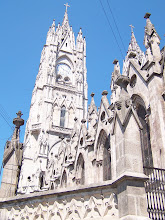
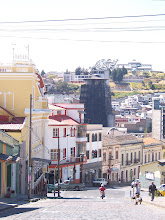
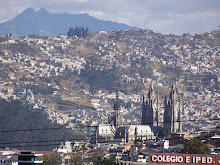
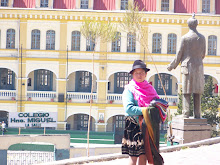
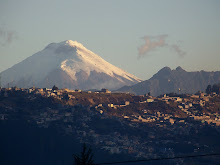
The bull fight sounds strikingly similar to horse races in Guatemala for Día de Todos Santos - appropriately insane and with little safety precautions.
ReplyDeleteI like the narrative format of your stories. If you could include some voice that resembles your favorite character from the Nutcracker, that would be great too.